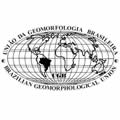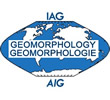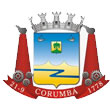Autores
- LORETO ANTONUNEDEmail: lanton@ccia.uned.es
- GERARDO DE VICENTEUCMEmail: gdv@ucm.es
- FRANCISCO JIMÉNEZ-CANTIZANOUNEDEmail: fjimenez329@alumno.uned.es
Resumo
Rivers are the most effective in shaping the topography, evolving as dynamic systems to adjust to one or more external forces that impose disequilibrium states. Thus, many of the geological processes influencing the evolution of the Earth’s surface may be inferred by analysing the fluvial network morphology.
The transient responses of river longitudinal profiles give rise to pronounced deviations from the equilibrium concave-up long profile. Within these anomalies, prominent breaks in slope described as knickpoints record those perturbation events in preexisting stretches upstream and new adjustment states downstream.
The Rio de la Plata Basin, formed by three large fluvial systems (Parana, Paraguay and Uruguay), is the second largest catchment in South America. The Parana River, ~4000 km in length, is the main drainage channel. Upstream of the confluence with Paraguay, the Paraná drainage network is characterized by the presence of hundreds of falls developed over basaltic rocks. In this work, a quantitative study of the Parana’s drainage network, upstream of the Paraguay confluence, is conducted based on topographic analysis. Channel network and stream’s longitudinal profiles were extracted from the Shuttle Radar Topography Mission (SRTM) v. 4.1 of 90 m of spatial resolution. To explore the signal of transient geomorphic response the main channel and its tributaries were analysed in terms of their longitudinal profiles shape and the application of geomorphic indices, as concavity index [Ci] or Stream-Length gradient index [SL] among others.
Results allow the interpretation of long profiles' shape in the Parana and major tributaries. The long profiles of the Parana’s tributaries display large-scale knickpoints that represent the transient signal generated by a temporary deviation away from an initial condition. The morphometric analysis and the geomorphic indexes calculated along the streams provide a tool to decode some the processes recorded by the long profile
Palavras chaves
geomorphic index; Knickpoint; transient response




















